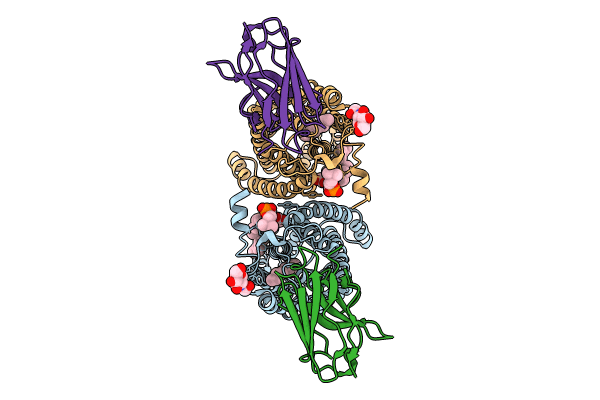
Deposition Date
2024-03-15
Release Date
2024-11-13
Last Version Date
2025-03-26
Entry Detail
PDB ID:
9EOT
Keywords:
Title:
Structure of human ceramide synthase 6 (CerS6) bound to C16:0 (nanobody Nb02)
Biological Source:
Source Organism:
Homo sapiens (Taxon ID: 9606)
Vicugna pacos (Taxon ID: 30538)
Vicugna pacos (Taxon ID: 30538)
Host Organism:
Method Details:
Experimental Method:
Resolution:
3.02 Å
Aggregation State:
PARTICLE
Reconstruction Method:
SINGLE PARTICLE


